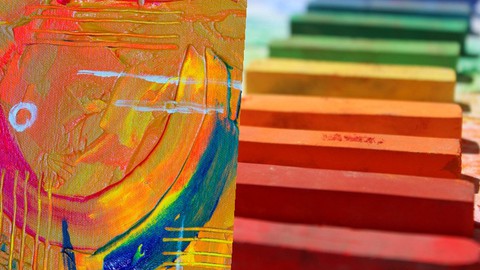
Learn Autodesk Sketch Book for Beginners
Learn Autodesk Sketch Book for Beginners, available at $49.99, with 8 lectures.
You will learn about Autodesk Sketch Book Drawing and Colouring This course is ideal for individuals who are Beginner in Autodesk Sketch Book It is particularly useful for Beginner in Autodesk Sketch Book.
Enroll now: Learn Autodesk Sketch Book for Beginners
Summary
Title: Learn Autodesk Sketch Book for Beginners
Price: $49.99
Number of Lectures: 8
Number of Published Lectures: 8
Number of Curriculum Items: 8
Number of Published Curriculum Objects: 8
Original Price: $19.99
Quality Status: approved
Status: Live
What You Will Learn
- Autodesk Sketch Book Drawing and Colouring
Who Should Attend
- Beginner in Autodesk Sketch Book
Target Audiences
- Beginner in Autodesk Sketch Book
SketchBook drawing and painting software enables designers, architects, and conceptual artists to quickly sketch ideas and create stunning illustrations.
– Professional drawing tools with a beautiful interface, ideal for those on the go
– Designed for both stylus and touch input
Get familiar tools in a digital space, including pencils, inks, markers, and more than 190 customizable brushes that can incorporate textures and shapes. Professionals trust SketchBook for its accuracy and speed, but mostly because it feels good.
A sketchbook is a book or pad with blank pages for sketching and is frequently used by artists for drawing or painting as a part of their creative process. Some also use sketchbooks as a sort of blueprint for future art pieces. The exhibition of sketchbooks at the Fogg Art Museum at Harvard University in 2006 suggested that there were two broad categories for classifying sketches:
-
Observation: this focuses on the documentation of the external world and includes many such travel and nature studies and sketches recording an artist’s travels.
-
Invention: this follows the artists’ digressions and internal journeys as they develop compositional ideas.
Sketchbooks come in a wide variety of shapes and sizes, with varied covers, and differing numbers of pages. Sketchbooks began as a way to provide a readily available supply of drawing paper in the convenient form of a book. Finish of the work found in the sketchbook varies widely depending on the artist and their style of work, with some having very simple drawings and notes, and some having highly worked images. Over time, it might allow others to see the artist’s progress, as their style and skills develop. Many artists personalize their sketchbook by decorating the covers. Sketches are sometimes removed from sketchbooks at a later date.
Sketchbooks made out of high quality paper, differentiated by weight (referring to density of the sheets) and tooth (also called grain), allow for a wide variety of techniques to be used, ranging from pencil drawings, to watercolor, to colored pencil, to pen and ink, and so on. Certain paper characteristics might be more desirable for use with certain mediums. Sketchbook paper comes in a variety of tones, ranging from pure white, to cream, and includes less common varieties, such as gray.
In displays of contemporary art, as well as historical retrospectives, intimate and ephemeral records are increasingly valued, resulting in the exhibition of sketchbooks alongside “finished” artworks.
Computer technology has allowed for the development of digital sketchbooks, such as Apple’s iPad devices and Microsoft’s Surface tablets.
Course Curriculum
Lecture 1: Introduction
Chapter 1: How to sketch using dry marker.
Lecture 1: How to sketch using dry marker
Chapter 2: Introduction
Lecture 1: How to do Sketching using Dry Marker.
Chapter 3: Autodesk Sketch Book Page Creation
Lecture 1: How to do Sketching using different brushes.
Lecture 2: How to use different Hatch and Brushes.
Lecture 3: How to use different Pastel Pattern.
Lecture 4: How to do paint using different dot pattern.
Lecture 5: How to do paint using different watercolor.
Instructors
-
Jyoti Verma
Researcher (Instructor)
Rating Distribution
- 1 stars: 0 votes
- 2 stars: 0 votes
- 3 stars: 0 votes
- 4 stars: 0 votes
- 5 stars: 0 votes
Frequently Asked Questions
How long do I have access to the course materials?
You can view and review the lecture materials indefinitely, like an on-demand channel.
Can I take my courses with me wherever I go?
Definitely! If you have an internet connection, courses on Udemy are available on any device at any time. If you don’t have an internet connection, some instructors also let their students download course lectures. That’s up to the instructor though, so make sure you get on their good side!
You may also like
- Top 10 Content Creation Courses to Learn in December 2024
- Top 10 Game Development Courses to Learn in December 2024
- Top 10 Software Testing Courses to Learn in December 2024
- Top 10 Big Data Courses to Learn in December 2024
- Top 10 Internet Of Things Courses to Learn in December 2024
- Top 10 Quantum Computing Courses to Learn in December 2024
- Top 10 Cloud Computing Courses to Learn in December 2024
- Top 10 3d Modeling Courses to Learn in December 2024
- Top 10 Mobile App Development Courses to Learn in December 2024
- Top 10 Graphic Design Courses to Learn in December 2024
- Top 10 Videography Courses to Learn in December 2024
- Top 10 Photography Courses to Learn in December 2024
- Top 10 Language Learning Courses to Learn in December 2024
- Top 10 Product Management Courses to Learn in December 2024
- Top 10 Investing Courses to Learn in December 2024
- Top 10 Personal Finance Courses to Learn in December 2024
- Top 10 Health And Wellness Courses to Learn in December 2024
- Top 10 Chatgpt And Ai Tools Courses to Learn in December 2024
- Top 10 Virtual Reality Courses to Learn in December 2024
- Top 10 Augmented Reality Courses to Learn in December 2024






















